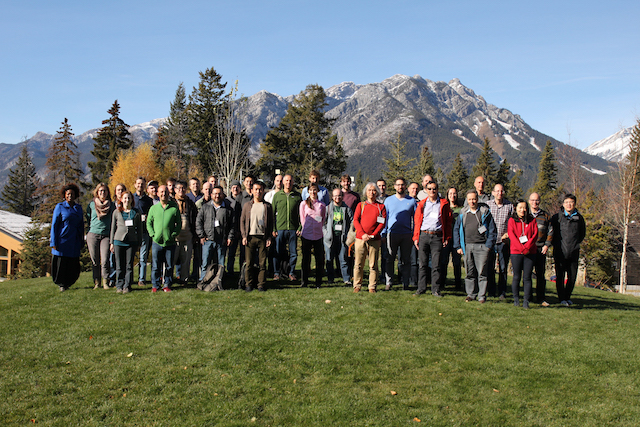Fusion Categories and Subfactors (18w5195)
Organizers
David Penneys (The Ohio State University)
Terry Gannon (University of Alberta)
Scott Morrison (Australian National University)
Julia Plavnik (Texas A&M University)
Description
The Banff International Research Station will host the "Fusion Categories and Subfactors" workshop from October 14th to October 19th, 2018.
Classically, the symmetries of a given object are described mathematically by the notion of a group. Over the past few decades, we have seen the emergence of new `quantum’ mathematical objects whose symmetries are best captured by the notion of a fusion category. Thus we say that fusion categories encode quantum symmetry. In turn, each of these fusion categories gives us a new topological field theory and associated quantum invariants for links and 3-manifolds. In recent years, we have seen that unitary fusion categories and closely related unitary modular categories describe the physics of topological phases of matter and topological quantum computation. Subfactors give a rich source of examples of unitary fusion categories. Indeed, all unitary fusion categories arise from subfactors, so subfactors are universal hosts for quantum symmetries. On the other hand, techniques from fusion categories have led to strong classification results for subfactors of small index. The purpose of this workshop is to build on the 2014 BIRS workshop on Subfactors and fusion categories. This conference will bring together the world’s experts in these related fields to unify existing results and to collaborate for future breakthroughs.
The Banff International Research Station for Mathematical Innovation and Discovery (BIRS) is a collaborative Canada-US-Mexico venture that provides an environment for creative interaction as well as the exchange of ideas, knowledge, and methods within the Mathematical Sciences, with related disciplines and with industry. The research station is located at The Banff Centre in Alberta and is supported by Canada's Natural Science and Engineering Research Council (NSERC), the U.S. National Science Foundation (NSF), Alberta's Advanced Education and Technology, and Mexico's Consejo Nacional de Ciencia y Tecnología (CONACYT).






